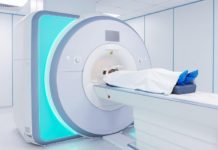David L. Martin, President and Chief Executive Officer of CSI, said, “Executing this transaction with Replidyne is an expedient way to take our company into the public market and generate a capital infusion for future growth. With an estimated $35 million to $40 million in additional cash and investments from the merger, we can further expand our sales and marketing organization and infrastructure to drive revenue growth and continue to invest in product development for future market expansion.”
“After a diligent process of evaluating strategic alternatives carried out over several months, we believe that a merger with CSI presents our investors with a very good opportunity to realize future value,” stated Kenneth J. Collins, President and Chief Executive Officer of Replidyne. “Through our process we have evaluated a broad array of opportunities across the life sciences, molecular diagnostics and medical device industries. After assessing the merger with CSI, we were impressed by the strong launch of the Diamondback 360°™, the growth opportunity for treatment of peripheral arterial disease with this product, particularly in calcified lesions, and the quality of the management team driving the company.”
The boards of directors of both CSI and Replidyne have unanimously approved the transaction, subject to customary closing conditions, including approval by the shareholders of each of CSI and Replidyne. The merger agreement contains certain termination rights for both CSI and Replidyne. The directors, as well as certain significant shareholders of each of CSI and Replidyne, have executed voting agreements in favor of the transaction.
The transaction is currently expected to close during the first quarter of calendar 2009. Upon consummation of the merger, Replidyne’s name will be changed to Cardiovascular Systems Inc. and the combined company will apply for listing on The NASDAQ Global Market® under a new trading symbol.
CSI had filed for an initial public offering in January 2008 but withdrew its registration statement for the initial public offering today. According to Martin, “The current equity market conditions have resulted in the IPO market coming to a standstill. Given the uncertainty regarding timing of a market recovery, we believe that this transaction offers the best opportunity at this time for continued growth and for our company to gain access to the public capital markets.”
Citi acted as financial advisor to Cardiovascular Systems, and Fredrikson & Byron P.A. served as CSI’s legal counsel. Morgan Stanley acted as financial advisor to Replidyne, and Cooley Godward Kronish LLP served as Replidyne’s legal counsel.
Cardiovascular Systems: Focused on Therapies for Vascular Disease
CSI is a medical device company focused on developing and commercializing interventional treatment systems for vascular disease. CSI’s initial product, the Diamondback 360° Orbital Atherectomy System, is a minimally invasive catheter system for the treatment of peripheral arterial disease, or PAD. PAD affects approximately 8 to 12 million people in the U.S. PAD is caused by the accumulation of plaque in peripheral arteries (commonly the pelvis or leg), reducing blood flow. The plaque deposits range from soft to calcified, with calcified plaque being difficult to treat with traditional interventional procedures. The Diamondback 360° is capable of treating a broad range of plaque types both above and below the knee, including calcified vessel lesions, and addresses many of the limitations associated with existing treatment alternatives.
The interventional community has waited a long time for a device that is both safe and effective in treating calcified vessels below the knee. The CSI Diamondback 360° fulfills this unmet need and is quickly becoming the first line device for below the knee interventions,” stated Dr. Tony Das, Director, Peripheral Vascular Interventions at the Presbyterian Heart Institute in Dallas, Texas.
“The Diamondback 360° is being used to pre-treat calcified vessels above the knee due to its ability to safely and effectively change the vessel compliance. This may make current and future adjunctive therapies perform even better,” said Dr. Ray Dattilo, Director of Peripheral Vascular Interventions, Kansas Heart and Vascular Center, St. Francis Hospital in Topeka, Kansas.
The Diamondback 360° utilizes the orbital rotation of a diamond grit coated offset crown that is attached to a flexible drive shaft. Physicians position the crown at the site of an arterial plaque lesion and remove the plaque by causing the crown to orbit against it, creating a smooth lumen, or channel, in the vessel. The Diamondback 360° is designed to differentiate between plaque and compliant arterial tissue, a concept known as “differential sanding.” The particles of plaque resulting from differential sanding are generally smaller than red blood cells and are carried away by the blood stream. As the physician increases the rotational speed of the drive shaft, the crown rotates faster and centrifugal force causes the crown to orbit, creating a lumen with a diameter that is approximately twice the diameter of the device. By giving physicians the ability to create different lumen diameters by changing rotational speed, the Diamondback 360° can reduce the need to use multiple catheters of different sizes to treat a single lesion.
In August 2007, the U.S. FDA granted 510(k) clearance for the use of the Diamondback 360° as a therapy in patients with PAD. The company commenced a limited commercial introduction of the product in the United States in September 2007 and began full commercial launch in the first calendar quarter of 2008. Through September 30, 2008, nearly 11,000 Diamondback devices have been sold to more than 280 hospitals.
Clinical Trials Demonstrate Efficacy
CSI has conducted three clinical trials involving 207 patients to demonstrate the safety and efficacy of the Diamondback 360° in treating PAD. In particular, the pivotal OASIS clinical trial was a prospective 20-center study that enrolled 124 patients with 201 treated lesions and met the study endpoints. CSI was the first, and so far the only, company to conduct a prospective multi-center clinical trial with a prior investigational device exemption, or IDE, in support of a 510(k) clearance for an atherectomy device. The Diamondback 360° provides a platform that can be leveraged across multiple market segments, with plans to launch additional products to treat lesions in larger vessels and to seek premarket approval (PMA) from the FDA to use the Diamondback 360° to treat patients with coronary artery disease.
Contacts:
For Cardiovascular Systems Inc.
Padilla Speer Beardsley:
Marian Briggs
(612) 455-1742
mbriggs@psbpr.com
Nancy A. Johnson
(612) 455-1745
njohnson@psbpr.com
Replidyne
Mark Smith
Chief Financial Officer
(303) 996-5535
Cardiovascular Systems Inc.























